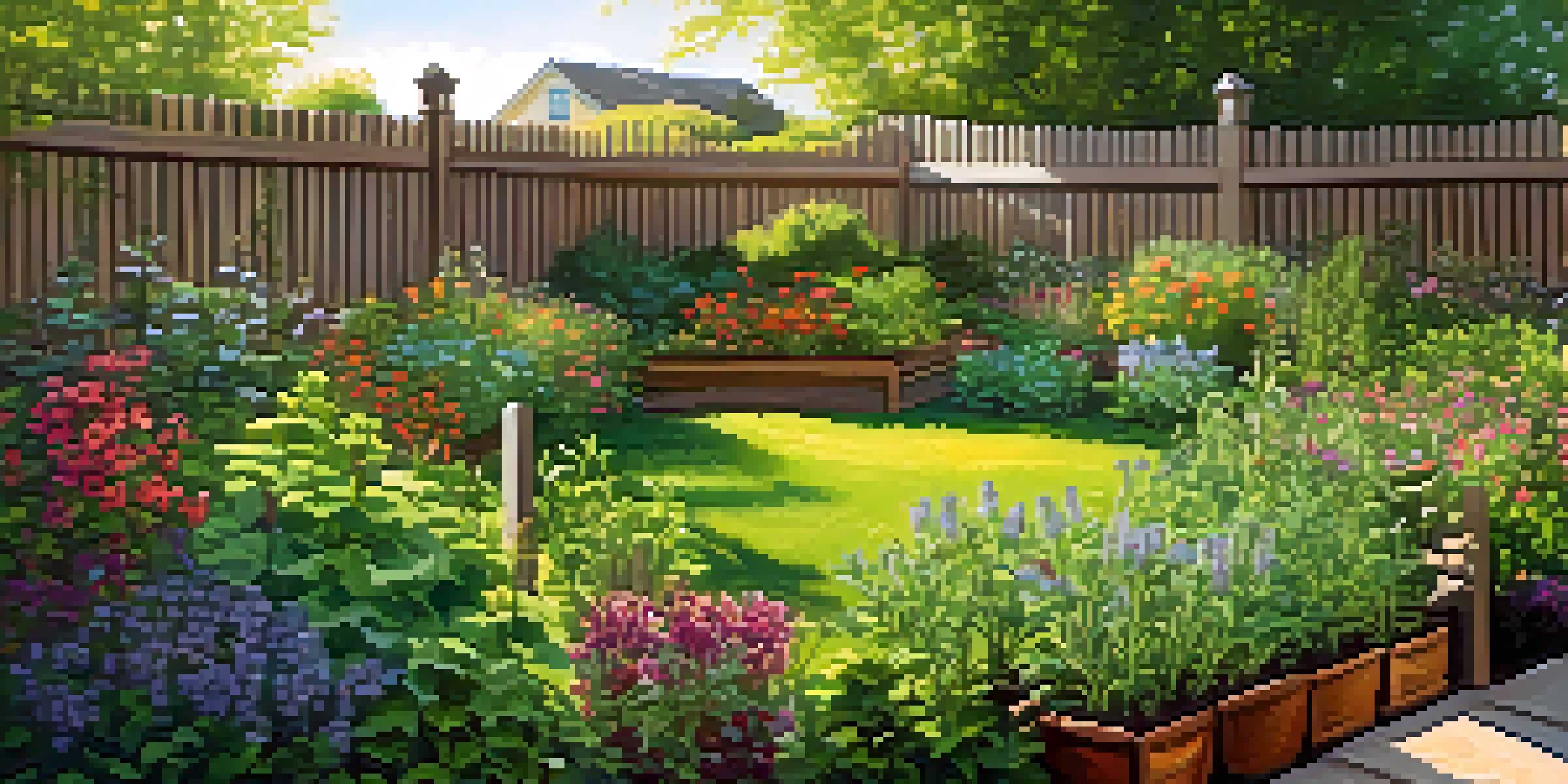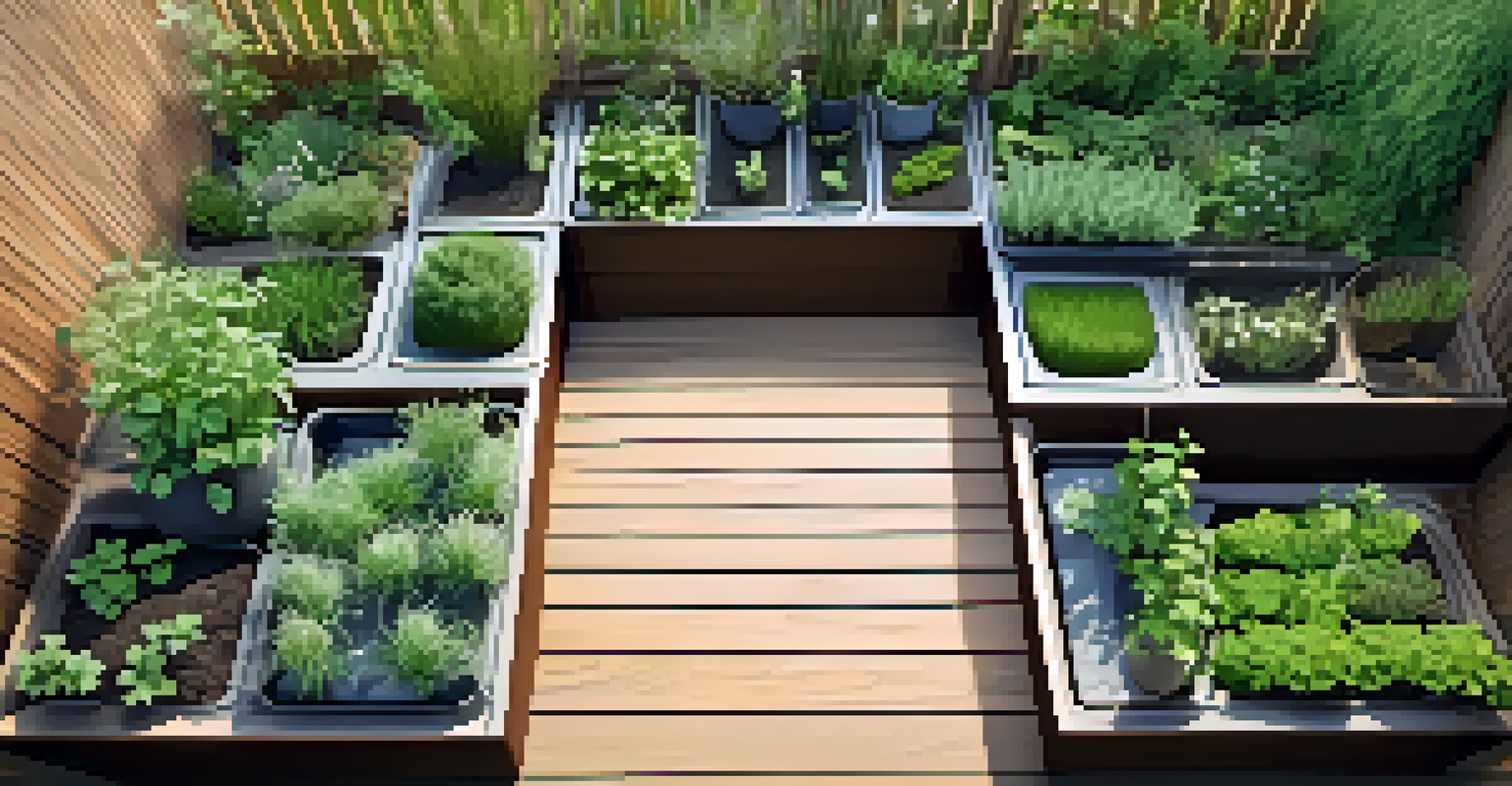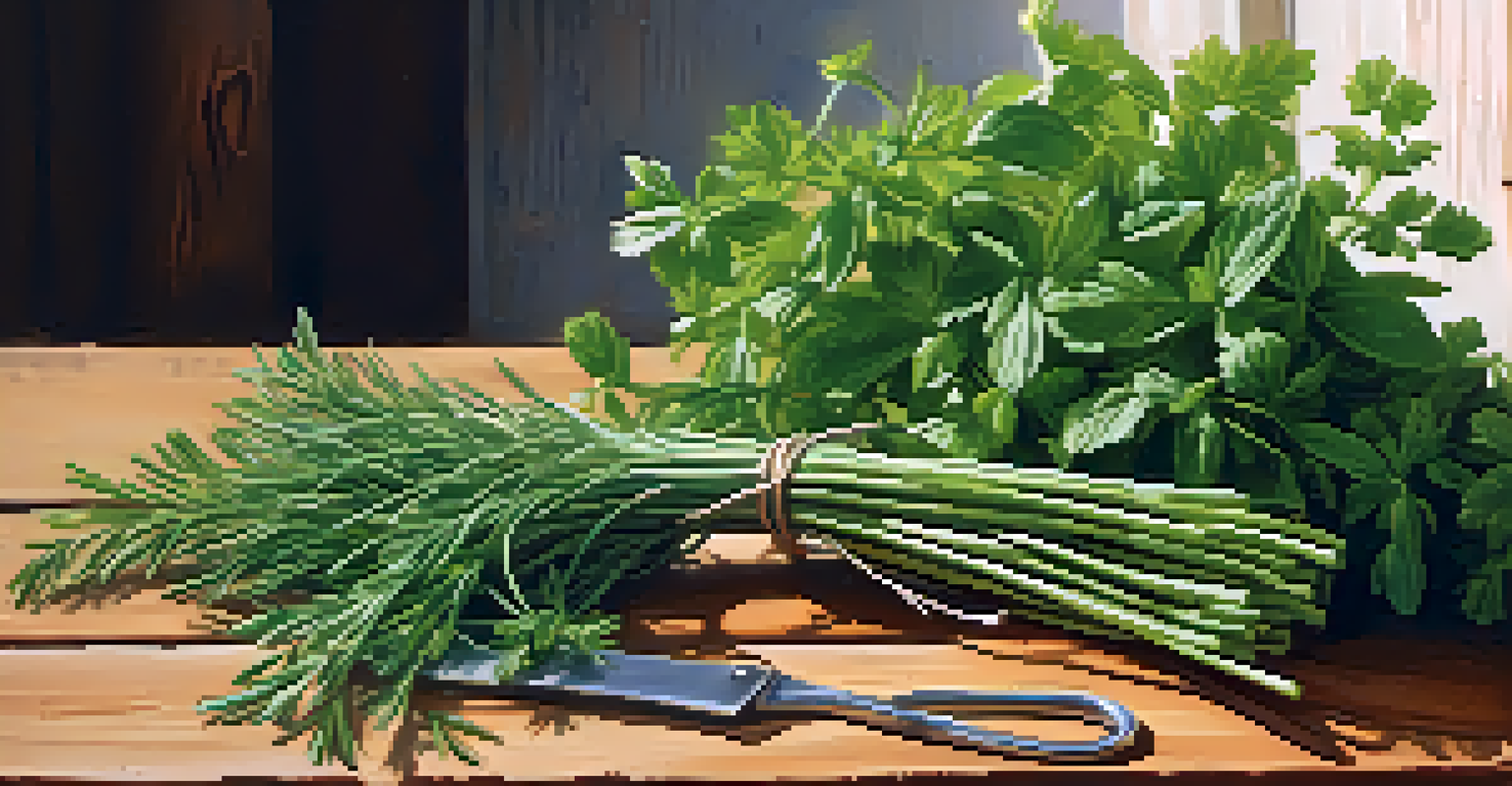Herb Garden Planning: Layout and Design Tips

Choosing the Right Location for Your Herb Garden
The first step in herb garden planning is selecting the right location. Ideally, you want a spot that receives at least six to eight hours of sunlight each day. Consider areas near your kitchen for easy access, but also think about drainage and wind exposure to protect delicate herbs.
Herbs are the friend of the cook, the ally of the gardener, and the joy of the kitchen.
Moreover, observe how the space changes throughout the day. Does it get too hot in the afternoon sun, or does it become too shaded by nearby trees? Understanding these factors will guide you in creating a thriving environment for your herbs.
Lastly, consider accessibility. Placing your herb garden close to your cooking area will encourage you to use fresh herbs more often, making your meals more flavorful and your gardening experience more enjoyable.
Deciding on Herb Varieties for Your Garden
Once you’ve chosen a location, it's time to decide which herbs to grow. Think about your culinary preferences—do you love Italian cuisine? Then basil and oregano should be on your list. If you enjoy teas, consider mint or chamomile.

Additionally, it's wise to select herbs that complement each other. For example, rosemary pairs well with thyme, and they both thrive in similar conditions. This not only maximizes space but also creates a harmonious garden ecosystem.
Select the Right Location
Choose a sunny spot near your kitchen with good drainage for optimal herb growth.
Lastly, consider the growth habits of your chosen herbs. Some like basil can grow tall, while others like chives stay low. Planning for their mature sizes will help you avoid overcrowding and ensure they each get the sunlight they need.
Designing Your Herb Garden Layout
Now that you have your herbs in mind, it's time to map out the layout. A common approach is to plant taller herbs at the back of a raised bed or garden plot, with shorter ones in front. This ensures that all plants receive adequate sunlight.
A garden is a friend you can visit any time.
You might also consider a tiered design, where plants are placed on varying heights to create visual interest while maximizing space. Using containers can also help achieve this effect, allowing you to bring herbs closer to eye level.
Don't forget to leave pathways between plants for easy access. This makes harvesting and maintenance simpler, ensuring that your garden remains healthy and productive throughout the growing season.
Incorporating Companion Planting Techniques
Companion planting is a fantastic way to enhance your herb garden's productivity. Certain herbs can benefit others by repelling pests or attracting pollinators. For instance, planting dill alongside cabbage can deter harmful insects.
This technique also helps create a more balanced ecosystem. By incorporating flowers such as marigolds, you can attract beneficial insects that will help pollinate your herbs and keep pests at bay.
Choose Complementary Herbs
Select herbs based on your culinary preferences and their growth habits to maximize space and harmony.
Before you plant, research which herbs and plants grow well together. This planning not only boosts your herb garden's health but can also make for a more vibrant and visually appealing space.
Choosing the Best Planting Method for Your Herbs
When it comes to planting your herbs, you have a few options: direct sowing seeds, starting from seedlings, or even using cuttings. Each method has its pros and cons, depending on the herbs you've chosen and your gardening experience.
For beginners, starting with seedlings from a nursery can be a foolproof way to ensure success. They give you a head start and allow you to focus on nurturing your garden rather than worrying about germination.
However, if you're feeling adventurous, direct sowing seeds can be rewarding and cost-effective. Just ensure the soil temperature is suitable for germination, and you'll be well on your way to a flourishing herb garden.
Soil Preparation and Fertilization Tips
Healthy soil is the foundation of a successful herb garden. Start by testing your soil's pH and nutrient levels, which will inform you whether amendments are necessary. Most herbs thrive in well-drained, slightly acidic to neutral soil.
Consider incorporating organic matter, such as compost, to improve soil structure and fertility. This not only provides essential nutrients but also enhances water retention, ensuring your herbs get the moisture they need.
Regular Maintenance is Essential
Consistent watering, weeding, and harvesting will keep your herb garden thriving throughout the season.
Lastly, be mindful of how you fertilize. Herbs often require less fertilizer than vegetables, so opt for a balanced, organic option, and remember to follow the recommended application rates to avoid overwhelming your plants.
Maintaining Your Herb Garden Throughout the Season
Regular maintenance is key to keeping your herb garden thriving. This includes watering, weeding, and trimming your herbs to promote healthy growth. Ideally, herbs should be watered deeply but infrequently to encourage strong root systems.
Weeds can compete with your herbs for nutrients and water, so regular weeding is crucial. Mulching can help suppress weed growth while retaining soil moisture, making it easier to care for your garden.

Finally, remember to harvest regularly. This not only encourages new growth but also allows you to enjoy the fruits of your labor in your cooking. A well-maintained herb garden can provide a continual bounty throughout the growing season.